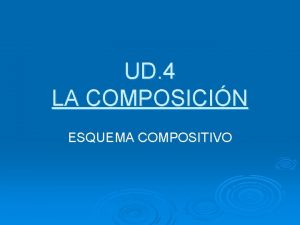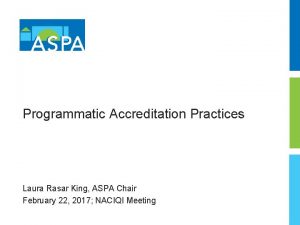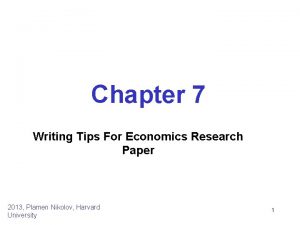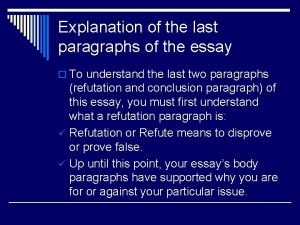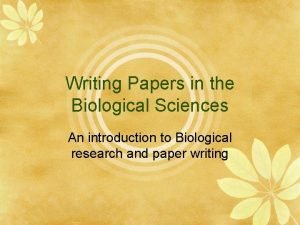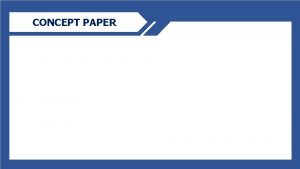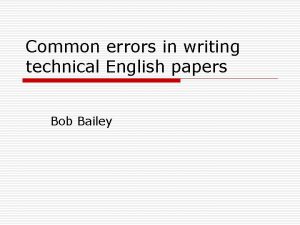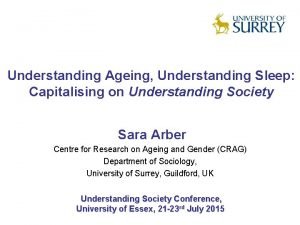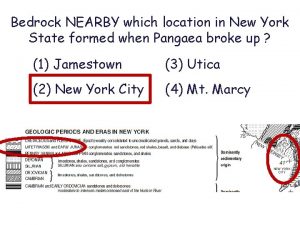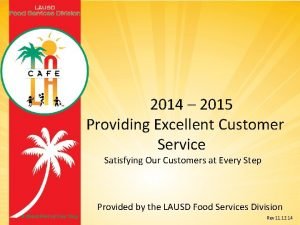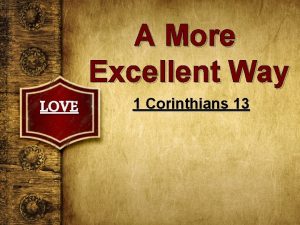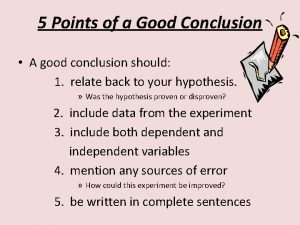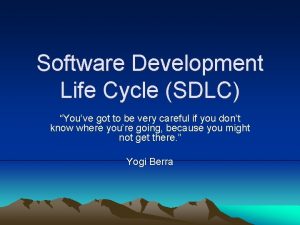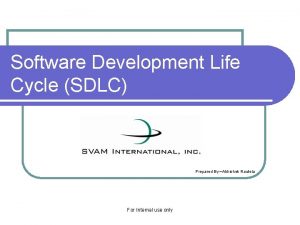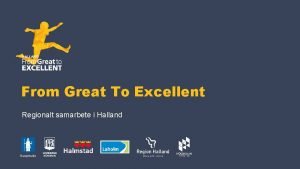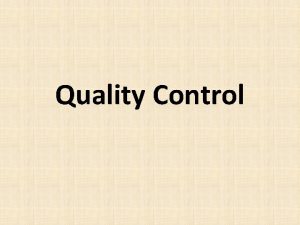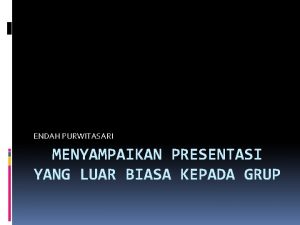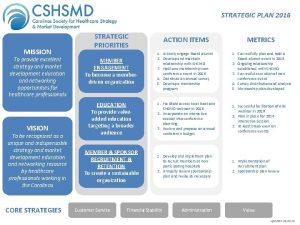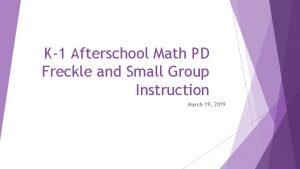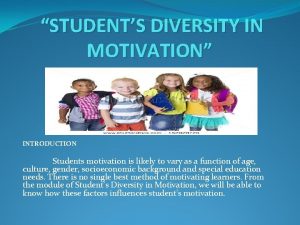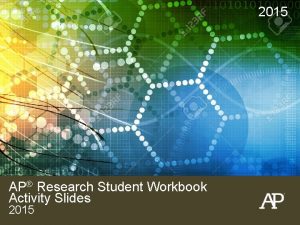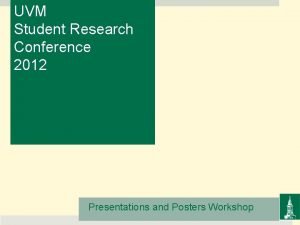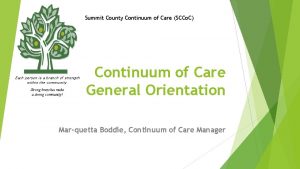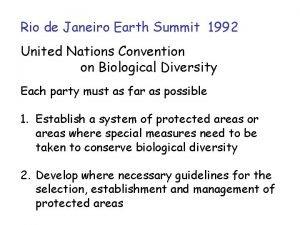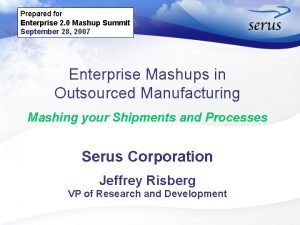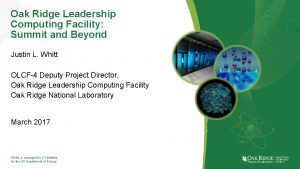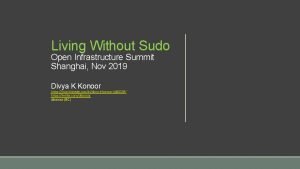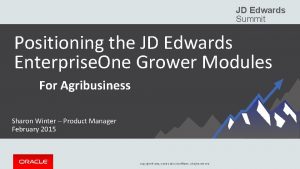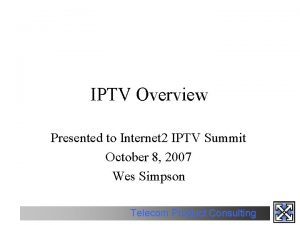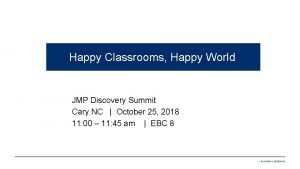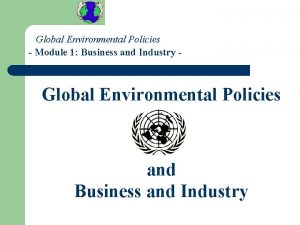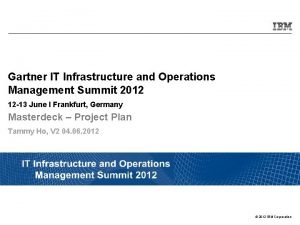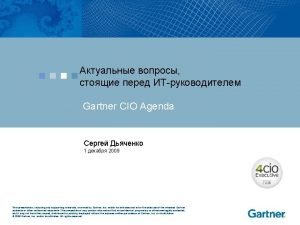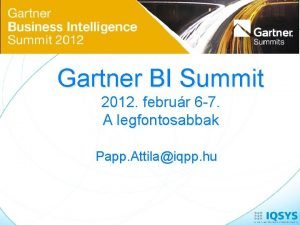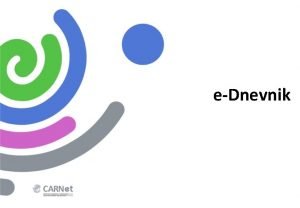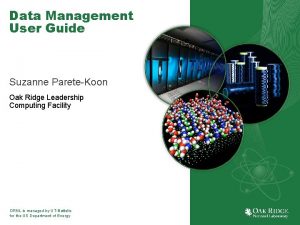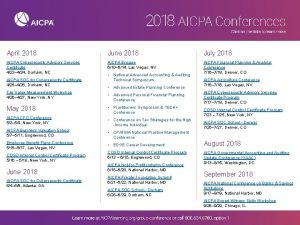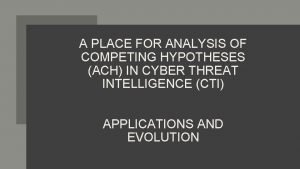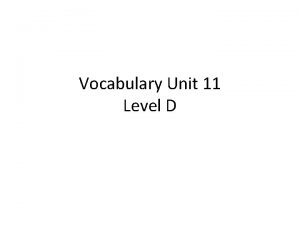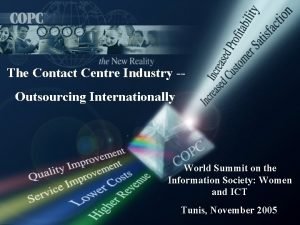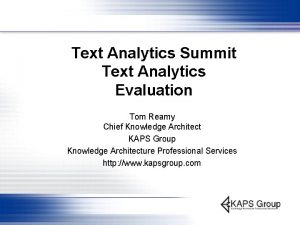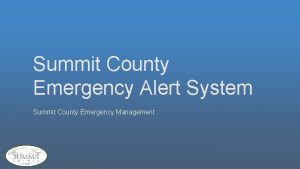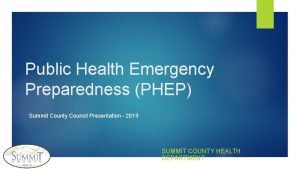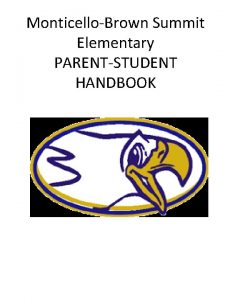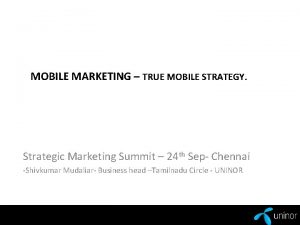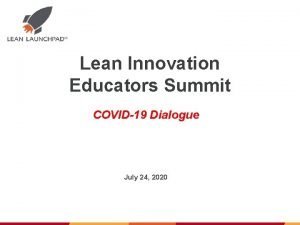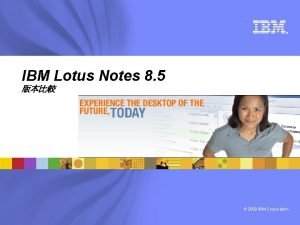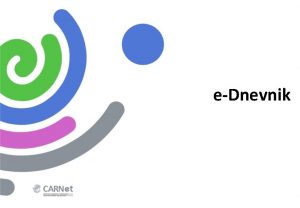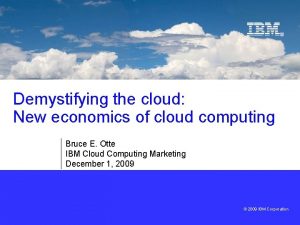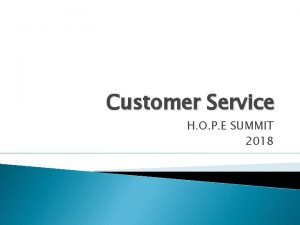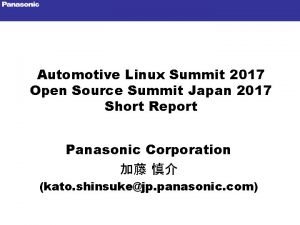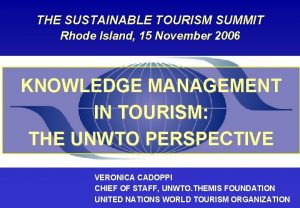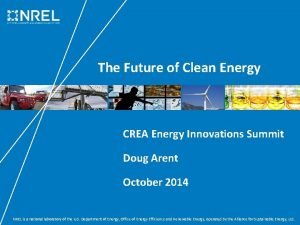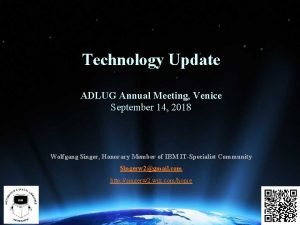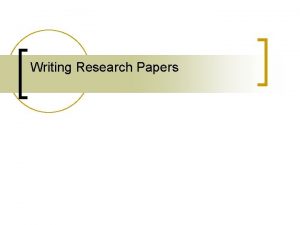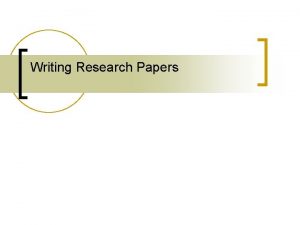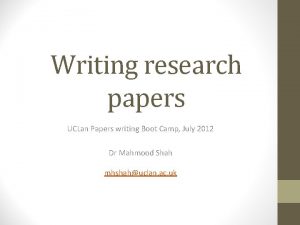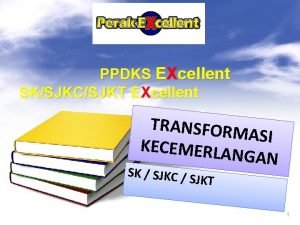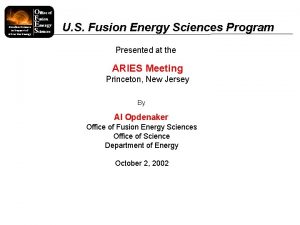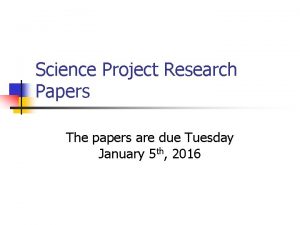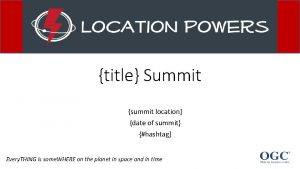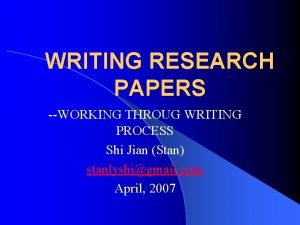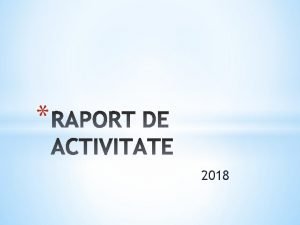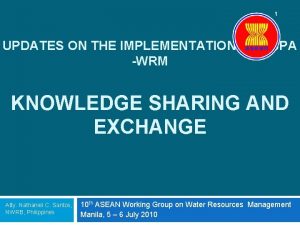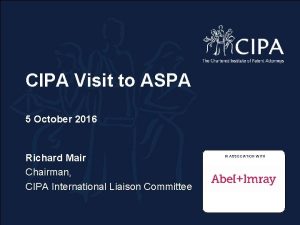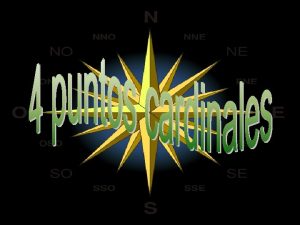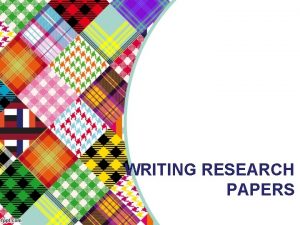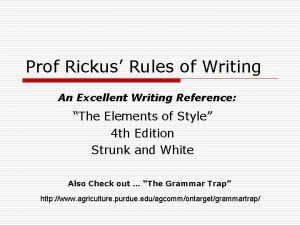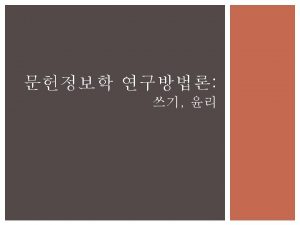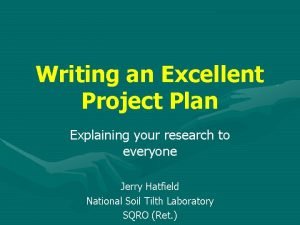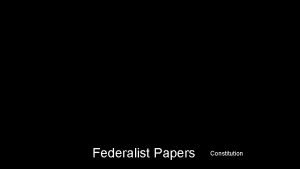Writing Excellent Research Papers ASPA Student Summit April















































































- Slides: 79

Writing Excellent Research Papers ASPA Student Summit April 10, 2010 Patricia M. Shields, Ph. D. Director, MPA Program Texas State University ps 07@txstate. edu http: //uweb. txstate. edu/~ps 07/

Tools of Scholarly Research 1. Step by Step Notebook Project Management Time, Materials, Ideas 2. Conceptual Frameworks Organize Ideas and Data

Focus: 20+ page scholarly paper § Literature Review § Empirical Research Collect and Analyze Data Dissertation Applied Research Project

Texas State Experience Problem ü Poor Literature Review ü Poor Organization ü No Conceptual Framework Evidence ü Awards ü Downloads on ecommons http: //ecommons. txstate. edu/arp/ ü Opportunities

Taxonomy of Cognitive Domain Remembering Retrieving, recognizing, recalling Understanding Constructing meaning from written communication through interpreting summarizing, inferring Applying Using information/ideas in new context Analyzing Breaking material into parts and determining how the parts relate (classifying) Evaluating Making judgments based on criteria and standards Creating Putting elements together to form a coherent whole

Thinking, Doing, Tools: Research Process Remembering Collecting materials Reading Notebook Understanding Reading Taking notes Notebook Applying Topic/purpose Outlining Notebook & Framework Analyzing Outlining Drafting Notebook & Framework Evaluating Outlining Drafting Notebook & Framework Creating Drafting Notebook & Framework

You will be judged by how well you write because nobody really knows how well you think (Gray, 1998, 140) Critical Thinking ü Application ü Analysis ü Synthesis ü Evaluation

Classical Pragmatism as intellectual source for workshop John Dewey William James Dewey, John. 1910. How We Think. New York: D. C. Heath Co. Dewey, John. 1938. Logic: the Theory of Inquiry. New York: Holt, Rinehart and Winston. James, William. 1907. Pragmatism: A New Name for an Old Way of Thinking. New Your: Longmans. Kaplan, Abraham. 1964. The Conduct of Inquiry: Methodology for Behavioral Science. Scranton, PA: Chandler Publishing. Emphasis on Tools of Inquiry

Build a Research Paper : One Step at a Time Notebook method for writing papers

Common Problems § Can’t find time to work on it for more than an hour § After a while I lose my place and forget what I originally wanted to do

The Step Process Transforms Writing a Paper Managing a Project Organizing • Materials • Time • Ideas

Organizes Materials § Three-ring binder § Tabs

Organizes Time Planning § Things-to-do list § Calendar

Organizes Ideas Integrated Outline § Before writing begins the outline incorporates the reading, notes, interviews § Entire notebook builds to create the outline § Conceptual Frameworks

Addresses Binge Writing § Common Form of Writer’s Block § Wait till the last minute to do the paper § Stress, sleeplessness § Poor quality work

Binge Writing Causes § Procrastination § Feel overwhelmed § Self doubt § Need big block time § Perfectionism § Destructive self talk § Perfect conditions Step Solution § Planning § Separate small activities § Use time wisely § Persistence § Use every day § Practice § habit of writing

Organization Step Notebook § § § § Things-To-Do List & Calendar To find & useful information Bibliography Notes Integrated Outline Drafts Sources

Things-To-Do List — Tab § Project oriented - tasks for paper only § Breaks the many tasks into small manageable pieces (15 minutes - hour) § Emphasizes scholarly reading § Keeps track of book chapter, articles etc. § Links to notes § Addresses procrastination - easy to return to work after a break

Calendar - Tab § Takes into account paper deadlines § Timetable for reading, notes, drafts etc. can be developed § Connects to other events in scholar’s life § Can be kept in personal Daytimer

To Find - Tab § Many of the best references are found in the bibliography of articles and books that are being read. § Scholars should note the reference in this portion of the notebook as they go along.

Miscellaneous - Tab Keep important difficult-to-classify information here. ü Email exchanges with professor ü Hotel and conference information ü If several people are working on a project, keep key email exchanges here ü Notes on phone conversations üWeb sites

Bibliography - Tab § Work on as paper progresses § Finish bibliography before begin writing paper § Can accomplish something on things-to-do list without having to think § Links to notes and things-to-do list

Notes - Tab § Keep detailed notes in this section. § Organize alphabetically by last name of author. § Develops habit of writing. § Builds reading comprehension. § Ties directly to the integrated outline. § Essential part of process - this is where the student really learns the new material.

Outline - Tab Integrated Outline üOutline that incorporates all of the notes. üBegin drafting paper after integrated outline is complete üFewer frantic searches.

Drafts - Tab § Early drafts are kept here. § Edit on hard copy and then make the corrections. § Use different color paper for different drafts.

Sources - Tab § Hard copies of journal articles, book chapters, monographs, government publications § File alphabetically by last name of the author.

Review - Organizing Time • Things-to-do list • calendar Materials All of the tabs in the notebook Ideas • Things-to-do list • Notes • Integrated Outline Key tabs

WORKFLOW Name of the author needs to be included in each item THINGS-TODO LIST Names & titles READIING & NOTES Ideas Theories Facts INTEGRATED OUTLINE Analysis Synthesis DRAFT Clarifying crafting creating

LAST THINGS FIRST § What is the end- state or goal that a scholar trying to achieve?

Concrete End-State of Paper • Series of coherently organized paragraphs • References imbedded in the paragraphs. Notebook reinforces the importance of • Author’s last name • Year of publication • Page of quote

Applying the Activities § Armed Forces and International Security: Global Trends and Issues (encyclopedia - short) § Editors Franz Kernic and Jean Callaghan § Transaction Press 2003 Chapter - The Bureaucracy in Military Sociology (8 -10 pages) Purpose : “This chapter examines the intersection of military sociology and bureaucracy. ”

Example Paragraph with embedded references Cotty et al. (2002) examine civil-military relations in the emerging democracies of post-communist Eastern Europe. Like Feaver (1996) they believe there is too much concern in the literature over the “threat of praetorian military intervention in domestic policies” (Cottey et al. 2002: 31). They call for a reconceptualization of civil-military relations “in terms of the governance of the defense and security sector” and the “wider problem of the democratic management and implementation of defense and security policy” (Cottey et al. 2002: 32).

Things-to-do list reinforces author’s name Date completed 2/3/04 6. Read Feaver 2/10/04 7. Take notes Feaver 2/4/04 8. Read Cottey et al 2/9/04 9. Take notes Cottey et al 2/6/04 10. Read ch. 1 Wilson 2/18/04 11. Take notes Ch. 1 Wilson 2/6/04 12. Skim Ch 2. Wilson

Starting the Things-To-Do List § Collect set of materials § Review & decide read or skim § Use post-it-notes to record read/skim § Each book chapter gets a note § Transfer post-it-note directives to Things-to-do list § Include note taking on list § Remember 15 -60 minute tasks

Things-To-Do List Emphasizes Reading and Thinking Important to read widely. Important to comprehend deeply. Ideas for paper come from the literature and thoughts of scholar. A persons writing ability is constrained by their reading comprehension. It is impossible to write clearly about a subject you do not understand.

Importance of Notes § A form of “practice” writing. § Use “persistence” in note taking. § Deepens comprehension of books and articles. Think while you take notes

Tips on Note-taking § Be self-reflective when taking notes. ü Do you really understand what the material? ü Less you understand the more detailed the notes should be. ü Notes can be take on computer or by hand. § Be sure the author’s last name, year and page are on every page of the notes.

Cottey et al 2002 p. 31 Says too concerned in lit about “threat of praetorian military intervention in domestic policies. ” p. 32 Should “reconceptualize in terms of democratic governance of the defense & security sector. ” Shifts focus to “the wider problem of the democratic mgt and implementation of defense & security policy. ” PART OF BUREAUCRACY - job to implement policy

Example - Integrated Outline Step 1 The Bureaucracy in Military Sociology I. Intro A. Set the stage/Weber ideal B. Purpose statement: This chapter examines the intersection of military sociology and bureaucracy 1. Define mil sociology 2. Interdisciplinary study bureaucracy II. Military Bureaucracy A. Unique Definition-War B. C. Authority Leadership decisions III. Recent Trends A. Bureaucracy and civilmilitary relations 1. Mature democracies 2. Emerging democracies B. New Roles IV. Conclusion

Integrated Outline Step 2 The Bureaucracy in Military Sociology I. Intro A. Set the stage/Weber ideal (Weber, Merton) B. Purpose statement: This chapter examines the intersection of military sociology and bureaucracy 1. Define mil sociology(Siebold, H-J & Moskos) 2. Interdisciplinary study bureaucracy Socio-(Mills) Political Sci (Allison) Policy science (Wilson) II. Military Bureaucracy A. Unique Definition - War (Janowitz & Little p. 27 -28) B. Authority (J&L p. 27 -28) C. Leadership decisions (Allison) III. Recent Trends A. Bur & Civil-military relations 1. mature democracies (Feaver) 2. emerging democracies (Cottey et al pp 31 -32)* B. New Roles (Mora, Parchomenko) IV. Conclusion *Paragraph slide 23 “Example”

Where does the outline come from? Analysis & Synthesis § Developing the outline can be the most difficult part of the process. § Think about organization of paper as go along. § Keep ideas in “miscellaneous” tab § Sorting method § Conceptual Framework

WORKFLOW Name of the author needs to be included in each item THINGS-TODO LIST Names & titles READIING & NOTES Ideas Theories Facts INTEGRATED OUTLINE Analysis Synthesis DRAFT Clarifying crafting creating

Path of learning or understanding while doing a paper Equilibrium with greater complexity Equilibrium

As scholar confronts the unexpected while doing the reading- confusiondoubt Equilibrium with greater complexity Equilibrium Unexpected doubt and reflective thought

Notebook is a tool to manage the ‘doubt and confusion’ stage Equilibrium with greater complexity Equilibrium Step notebook is a tool that brings order to the outer world while the inner world changes Transformations of Inquiry

Tools of Scholarly Research 1. Step by Step Notebook Project Management Time, Materials, Ideas 2. Conceptual Frameworks

Pragmatism: Theory as Tool William James John Dewey Hotel Corridor (resolve problem) Labor Saving Contrivance (less mental effort) John Dewey Maps (direction to data collection - in light of purpose)

Review: Thinking, Doing, Tools Remembering Collecting materials Reading Notebook Understanding Reading Taking notes Notebook Applying Topic/purpose Outlining Notebook & Framework Analyzing Outlining Drafting Notebook & Framework Evaluating Outlining Drafting Notebook & Framework Creating Outlining Drafting Notebook & Framework

What is a Conceptual Framework? • Formal way of thinking (conceptualizing) about a process/system under study. • Set of concepts linked to a planned or existing system of methods, behaviors, relationships and objects. • Type of intermediate theory that connects to all aspects of inquiry (purpose, lit review, methodology, data collection, statistics). Conceptual frameworks act like maps that give coherence to empirical inquiry.

Sources: Conceptual Framework Ø Shields, Patricia, M. and Hassan Tajalli. (2006). “Intermediate Theory: The Missing Link in Successful Student Scholarship. ” Journal of Public Affairs Education 12(3): 313 -334. http: //ecommons. txstate. edu/polsfacp/39/ Ø Shields, Patricia M. (1998). “Pragmatism as a Philosophy of Science: A Tool for Public Administration, ” Research in Public Administration. Volume 4: 195 -225. http: //ecommons. txstate. edu/polsfacp/33/

Conceptual Frameworks and Research Papers • Literature Review Help with the outline • Empirical Research Most useful - give the activities (choosing the topic, purpose, method, data collection, statistics, data analysis) coherence

Empirical Research Process Research purpose Conceptual Focusing on a Topic Organizing ideas to achieve the purpose Methodology Statistics Framework How to Collect Data Analyzing and Organizing Data

Organization of Empirical Research (50 to 200 pages) § Chapter I – Introduction (statement of purpose) § Chapter II – Literature Review (conceptual framework) § Chapter III – Methodology (techniques used to collect the data) § Chapter IV – Results (aggregation of the data - often statistical) § Chapter V – Conclusion

Texas State Story Accreditation Team (1988) Problem Applied Research Projects 1. Poor Literature Reviews (notebook) 2. No Conceptual Framework

Students Kept Asking Dr. Shields: What is a Conceptual Framework ?

Admit -- I did not know How can I answer this question John Dewey Multiple frameworks! Tools that: Changed with the goal of the Scholar!

BEGAN Earl Babbie’s Practice of Social Research Three Research Purposes John Dewey Exploration Description Explanation Description - Categories Explanation - Hypotheses Exploration ? ? ? Working Hypotheses

Conceptual Framework Matrix All elements of the empirical research process aligned around the conceptual framework. [handout] 1. Look at each framework separately 2. Apply frameworks

Connecting purpose and framework Research Purposes (Chapter I) 1. 2. 3. 4. 5. Exploration Description Gauging Decision Making Explanation/ Prediction Conceptual Frameworks (Chapter II) 1. 2. 3. 4. Working Hypotheses Descriptive Categories Practical Ideal Type Models of Operations Research 5. Formal Hypotheses

Descriptive Categories ØLinked to “research purpose” Description ØClassification, taxonomies sorting into categories ØType of critical thinking – Analyzing Breaking material into parts and determining how the parts relate (classifying) ØMost basic type of conceptualization ØHelps scholar make sense out of a mess

Descriptive Categories: Examples § § Messy Rooms Kitchen Example Home Depot - less mental effort PAR Article example - practical, pluralistic, participatory, provisional

Working Hypotheses Ø Linked to “research purpose” Exploratory Ø Used for problems in their preliminary stages Ø Provisional means of advancing investigation Ø Most flexible framework

Practical Ideal Type Ø Linked to the “research purpose” gauging Ø Enables one to gauge or assess the efficacy of a policy or management process against an ideal standard Ø Akin to Best Practice Ø Criteria used to judge a process (classify criteria) Ø Provisional - Normative or “Should” component

Models of Operations Research Ø Linked to the “research purpose” decision making Ø Quantitative techniques already well developed in PA and public finance (Examples -Cost Benefit Analysis, Cost Effectiveness Analysis, linear programming, Economic Base Analysis etc. ) Ø Often takes form of mathematical formula (PVB-PVC >0) Ø Answer questions - Which project should be built?

Formal Hypotheses Ø Linked to “explanatory” research purpose Ø Most research methods texts implicitly assume formal hypotheses are the framework used in a research project. Ø Associated with experiments and the scientific method.

More Hypotheses Ø Specifies an expected relationship between concepts A B (education influences income) Ø Linked to causal theories Ø Statistical Tests Ø Associated with impact evaluation (program A will lead to outcome B – snack tax obesity rate

Example: Descriptive Categories § Josh Shepherd - Guest Worker Policy -What are the key issues? Key issues are found in a variety of literatures - his job to sort out, classify key issues § http: //ecommons. txstate. edu/arp/261/

Purpose: The purpose of this research is to describe the attitudes and opinions of agricultural growers in Texas toward guest worker policy. § Guest Worker Policy 1. 2. 3. 4. 5. 6. Hiring Process Labor Standards Enforcement Legal Status Security Possible outcomes Six categories are the conceptual framework

Refine the Conceptual Framework: Find the elements within the categories. § Key categories are the bins. § Clothes § Toys § Books § What goes in the bins? (identifying the elements) § Clothes -socks underwear, shirts § Toys- dolls, boats, games § Books - story, reading

Guest Worker Policy § Hiring Process labor market conditions recruitment contracting § Labor Standards transportation housing legal rights minimum working hours compensation § Enforcement monitoring and administration numerical limits guest worker return § Legal Status status of workers status of family § Boarder Security § Possible Outcomes dependency of foreign labor illegal immigration wage depression worker exploitation & discrimination The framework is the basis of the outline for the lit review, questionnaire design, and organization of the results chapter.

Constructing Questionnaires using the Conceptual Framework Descriptive Category Hiring Process Questionnaire item labor market conditions Guest worker policy should contain a labor market test that ensures that growers have attempted to hire domestic workers before guest workers can be hired. * These are recruitment elements of the framework contracting The recruitment of guest worker policy should be administered. A) directly by employers B) by the federal government C) through a combination of direct recruitment by growers and the federal government Guest worker policy should give guest workers the freedom to negotiate their own contracts. * Labor Standards Transportation Guest worker policy should mandate that A) employers pay for a guest worker’s travel expenses into the United States and for their return trip home……. .

Putting Conceptual Frameworks into Practice § Build Conceptual Framework with Literature § Operationalize the Conceptual Framework Develop and use the maps to Achieve Research Goal

Handout -- Review Examples Tables 1. Conceptual Framework linked to literature 2. Conceptual Framework Operationalized

Mysteries of Writing Research Papers New Light § How to get and stay organized § How to use theory

Bibliography Bloom B. S. 1956. Taxonomy of Educational Objectives, Handbook I: The Cognitive Domain. New York: David Mc. Kay Co Inc. Gray, T. 1998. “Your Students can too Write - And You Can Show Them How. ” Journal of Criminal Justice Education. 9: 131153 Shields, Patricia M. 2006. Step by Step: Building a Research Paper. Stillwater OK: New Forums Press.

Useful Web Sites § Provides guidelines for writing a prospectus that use conceptual framework table and operationalization table. http: //uweb. txstate. edu/%7 Eps 07/documents/prosdirect. pdf § Examples of prospectus organized by type of conceptual framework § Syllabus of class that gets students ready to write their Applied Research Project POSI 5335 Problems in Research Methodology http: //uweb. txstate. edu/%7 Eps 07/documents/proexam. pdf http: //uweb. txstate. edu/~ps 07/documents/sy 35 fa 99. pdf § Syllabus of class where students write their Applied Research Project POSI 5397 Applied Research Project http: //uweb. txstate. edu/~ps 07/documents/sy 97 fa 99. pdf § 250 + Texas State student papers http: //ecommons. txstate. edu/arp/ § Dr. Shields Home Page http: //uweb. txstate. edu/~ps 07/

Classical Pragmatism Sources Shields, Patricia M. 2008. Rediscovering the Taproot: Is Classical Pragmatism the Route to Renew Public Administration Review. (68)2: 205 -221. Shields, Patricia M. 1996. Pragmatism: Exploring Public Administration’s Policy Imprint. Administration & Society 28(4): 390 -411. Shields, Patricia M. 1998. Pragmatism as Philosophy of Science: A Tool for Public Administration. Research in Public Administration: 195 -226. Shields, Patricia M. 2003. The Community of Inquiry: Classical Pragmatism and Public Administration & Society 35(5): 510 -538. Shields, Patricia M. 2004. Classical Pragmatism: Engaging Practitioner Experience. Administration & Society. 36(3): 351 -361. Shields, Patricia M. 2005. Classical Pragmatism Does Not Need an Upgrade: Lessons for Public Administration & Society 37(4): 504 -518. Shields, Patricia M. 2005. Classical Pragmatism: Roots and Promise for a PA Feminist Theory. Administrative Theory and Praxis 27(2): 370 -376.

More sources Snider, Keith. Expertise or Experimenting? Pragmatism and American Public Administration 1920 -1950. Administration & Society 32(3): 329 -354. Snider, Keith. 2005. Rortyan Pragmatism: “Where’s the Beef” for Public Administration? Administration & Society. 37(2): 243 -247 Evans, Karen. 2000. Reclaiming John Dewey: Democracy, Inquiry, Pragmatism and Public Management. Administration & Society 32(3): 308 -328. Evans, Karen. 2005. Upgrade or a Different Animal Altogether? Why Old Pragmatism Better Informs Public Management and New Pragmatism Misses the Point. Administration & Society. 37((2): 248 -55. Miller, Hugh T. 2004. Why Old Pragmatism Needs and Upgrade. Administration & Society. 36(2): 243 -249. Miller, Hugh T. 2005. Residues of Foundationalism in Classical Pragmatism. Administration & Society. 37(3): 360 -374.

More Sources Hildebrand, David L. 2005. Pragmatism, Neo Pragmatism and Public Administration & Society. 37(3): 345 -359. Hildebrand, David L. 2008. Public Administration as Pragmatic, Democratic, and Objective. Public Administration Review. 68(2): 222 -229. Stolcis, Gregory B. 2004. A View from the Trenches: Comments on Miller’s “Why Old Pragmatism Needs an Upgrade. ” Administration & Society. 36(3): 362 -368. Webb, James L. 2004. Comment on Hugh T. Miller’s “Why Old Pragmatism Needs and Upgrade. ” Administration & Society. 36(4): 479 -495.
 Tipos de esquemas compositivos
Tipos de esquemas compositivos Aspa accreditation
Aspa accreditation Writing tips for economics research papers
Writing tips for economics research papers Excellent enviro
Excellent enviro Explanation
Explanation Writing papers in the biological sciences
Writing papers in the biological sciences Informal concept paper
Informal concept paper Writing technical papers
Writing technical papers A whale bone that originally contained 200 grams
A whale bone that originally contained 200 grams Excellent very good good fair poor scale
Excellent very good good fair poor scale Oh lord our lord how excellent is thy name in all the earth
Oh lord our lord how excellent is thy name in all the earth Thin layers of volcanic ash act as excellent time markers
Thin layers of volcanic ash act as excellent time markers Situation where you provided excellent customer service
Situation where you provided excellent customer service I will show you a still more excellent way
I will show you a still more excellent way Love is the more excellent way
Love is the more excellent way How to start a good conclusion
How to start a good conclusion Dsdm models
Dsdm models Slc vs sdlc
Slc vs sdlc From great to excellent
From great to excellent Excellent product quality
Excellent product quality Excellent presentation
Excellent presentation Excellent strategy
Excellent strategy Bristeel
Bristeel How was your last weekend
How was your last weekend We ...... a big piece of wood last saturday. (see)
We ...... a big piece of wood last saturday. (see) Uheaa contact
Uheaa contact Class maths student student1 class student string name
Class maths student student1 class student string name National student clearinghouse student tracker
National student clearinghouse student tracker Https://student.freckle.com/
Https://student.freckle.com/ Hello, good morning teacher!
Hello, good morning teacher! Student leaning space
Student leaning space Keenan research summer student program
Keenan research summer student program Research findings on student diversity on motivation
Research findings on student diversity on motivation Ap research student workbook 2020
Ap research student workbook 2020 Uvm powerpoint template
Uvm powerpoint template Dialogue writing with teacher and student
Dialogue writing with teacher and student Tungsten fabric architecture
Tungsten fabric architecture Solar leasing summit county
Solar leasing summit county Summit county probation
Summit county probation Summit county continuum of care
Summit county continuum of care Microsoft summit 2017 sydney
Microsoft summit 2017 sydney Earth summit 1992
Earth summit 1992 Mashup summit
Mashup summit Summit oak ridge
Summit oak ridge Open infrastructure summit 2019
Open infrastructure summit 2019 Jde summit
Jde summit Misys summit ft
Misys summit ft Iptv architecture
Iptv architecture Jmp discovery
Jmp discovery Gdrc business summit
Gdrc business summit Gartner operations summit
Gartner operations summit Gartner 2017 cio agenda pdf
Gartner 2017 cio agenda pdf Februr
Februr Ednevnik
Ednevnik Olcf summit user guide
Olcf summit user guide Summit lake wv
Summit lake wv Aicpa private foundation summit
Aicpa private foundation summit Adobe summit 2017
Adobe summit 2017 Ach intelligence analysis
Ach intelligence analysis Vocab unit 11 level f
Vocab unit 11 level f Silver summit strain
Silver summit strain Contact centre summit
Contact centre summit Text analytics summit
Text analytics summit Summit county alerts
Summit county alerts Phep summit
Phep summit Kentico dynamics gp integration
Kentico dynamics gp integration Monticello brown summit elementary school
Monticello brown summit elementary school Mobile marketing summit
Mobile marketing summit Lean innovation educators summit
Lean innovation educators summit Ibm inotes summit bank
Ibm inotes summit bank Cognitive marketing summit
Cognitive marketing summit Gartner it operations management
Gartner it operations management Slings in arches of foot
Slings in arches of foot Ematica za nastavnike
Ematica za nastavnike North carolina digital government summit
North carolina digital government summit Customer service summit 2018
Customer service summit 2018 Open source summit japan
Open source summit japan Summit rhode islands toursism
Summit rhode islands toursism Crea energy innovations summit
Crea energy innovations summit Summit supercomputer
Summit supercomputer
